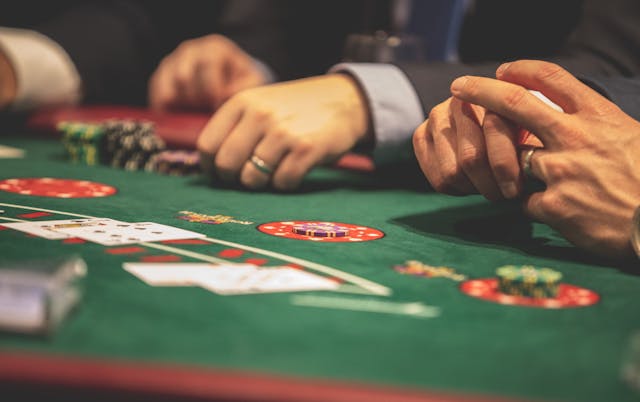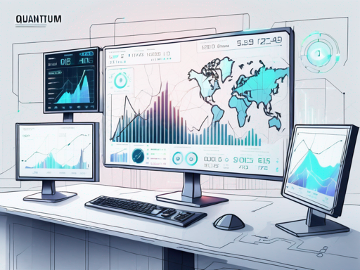I managed to get in time talking with Samuel Laflamme, a French-Canadian composer from Montreal, Canada. We talked about how he got involved with music composition, some of his influences, and of course his work on Outlast and the upcoming Outlast 2, the latter of which is due out on April 25th for the Xbox One, PS4 and PC.
 For Laflamme, it all started in the early 1990s, listening to a lot of soundtracks from Hans Zimmer and Mark Mancina from films like Speed and The Rock. As a teenager he was fascinated with movie soundtracks and obscure scores that helped sculpt the popularity for a lot of big blockbusters back in the day, from Backdraft to Face/Off. This curiosity for sound carried through Laflamme’s life into his later teenage and young adulthood years, where he eventually began learning to play the piano, attended school and studied music. It wasn’t long after that he began composing music for documentaries, some commercials, and even scores for dance choreography.
For Laflamme, it all started in the early 1990s, listening to a lot of soundtracks from Hans Zimmer and Mark Mancina from films like Speed and The Rock. As a teenager he was fascinated with movie soundtracks and obscure scores that helped sculpt the popularity for a lot of big blockbusters back in the day, from Backdraft to Face/Off. This curiosity for sound carried through Laflamme’s life into his later teenage and young adulthood years, where he eventually began learning to play the piano, attended school and studied music. It wasn’t long after that he began composing music for documentaries, some commercials, and even scores for dance choreography.
Laflamme explained that he didn’t really become a gamer until the early 2000s, “I loved Mario Kart, and Mario Tennis, and games like that” he says. But he wasn’t necessarily into horror games.
“I played this game — it wasn’t a big name game — you probably haven’t heard of it… Phantasmagoria. […] I didn’t play it alone in the dark. I played [Phantasmagoria] with my friends, it was like a party game for us.” he explained. Beyond that, classic horror titles wasn’t much of an interest for the music aficionado.
So how did he get involved with one of the scariest horror games to come out in recent years, even though he wasn’t big into horror games and scary titles? Well, one of Laflamme’s friends working at Red Barrels managed to contact him about a project they were working on and it turned out to be none other than Outlast, which is how he joined the project.
“We had conversations and talked about the script, the atmosphere and the music” he says. Laflamme explained that they thoroughly discussed Outlast well before he began working on the actual music, and that he spent quite a bit of time simply getting an understanding of what it was they wanted to achieve with game and the sound. He says that “[…] we had to make sure that there wasn’t an overlap between the ambient sound and the music”. It was about making sure the music was engrossing, engaging and expressive, but it was also about creating space so that the sound design team could still portray atmospheric ambiance and bring those horror elements to life; marrying the score with the effects.
The process of making the music for Outlast was an organic one, according to Laflamme. He explains that they didn’t have a large orchestra to work with, but they did have a chamber-sized setup to record the music. “We needed the live instruments” he says, “the [instrument] samples [weren’t working]”. He decided to bring in live instruments after only going so far with the samples and the synthesized sounds that were made available from online repositories. This is where Outlast‘s unique sound took shape.
Iconic films like Stanley Kubricks’ The Shining and other horror classics that utilized different tones and palettes to set the mood were inspiration for Outlast; but the goal wasn’t to imitate the classics, it was to create something new.
“It’s definitely about creating new sounds” he says, “We already have all this technology and different instruments. It’s about using the music to help tell a story.” Laflamme goes on to say that while Hans Zimmer and others have managed to create all new ways to make music, and utilize the technology to evolve the composition of sound, it’s how it’s utilized to convey the story that makes the difference. He cites Daft Punk’s Tron Legacy soundtrack as something that stands out amongst many of the recent movie soundtracks made; he also cites Hans Zimmer’s Interstellar score as being a compelling piece of music that was able to tell an intricate story on-screen using classic instruments.
And in this regards, Outlast and Outlast 2 were about coming together and working with Red Barrels to craft something that was memorable, original and uniquely horror-themed. It wasn’t necessarily about creating new instruments or technology, but using what was available to create new sounds.
“It was a collaborative experience”, Laflamme explains “They would come to me with ideas, and I would experiment with different sounds and share with them what I was working on”. Red Barrels offered input and feedback, while Laflamme exercised his creative muscles to crafted a sound that was wholly its own.
He stated that working on an indie project like Outlast was a lot different and more liberating than being locked down to television, movies or licensed properties. Having previously worked on other large projects as a composer, Laflamme noted that there was a lot less oversight and restrictions on how the music could be shaped under Red Barrels’ umbrella.
In fact, he worked with the percussionists and found that “they were able to create a tremolo with the cymbals” he explained; this was something that found its way into the game itself and allowed the sound to take on a completely different shape because of that decision.
Hence, Outlast has familiar themes but “it doesn’t have a traditional John Williams [style] theme.” He explained. There’s familiarity but you won’t be humming the Outlast music because it’s not that kind of soundtrack. They did have some theme variations, but a lot of it was broken down and utilized as ambient layers throughout the gameplay experience. They had about three through 10 different variations for a track, utilizing it and layering it in different ways throughout the game in order to keep it feeling fresh as players progressed through the game.
Things, however, take a decidedly different turn for Outlast 2.
I was curious if they decided to expand on the symphony orchestra, perhaps bringing in more string variations, more cellos, more wind instruments, bigger percussions. But that wasn’t the case at all…
“We got rid of the orchestra!” Laflamme exclaimed.
I was taken aback by that response, but he explained “I wanted to do something different, so I went with guitars”. Given the occult themes in the second game, which is set in the deep south as opposed to the confines of a concrete prison, Laflamme decided to utilize more grounded, and natural instruments that reflected the culture of the environment. Banjos, guitars, experimental percussion and other similar instruments were used to bring the atmosphere to life in Outlast 2.
What’s more is that he explains that while the original Outlast was about the scares and the thrills and the pop-out horror moments, Outlast 2 is a lot more psychological. Laflamme portrays Outlast 2 as more of a psychological horror game, as something that will stick with people well after the credits roll, saying “I wanted people to be left thinking about the experience, to feel as if they just woke up from a nightmare.”
Work on the soundtrack for Outlast 2 began about two and a half years ago, according to Laflamme. They began going over the concept art, the story, the themes and the direction that Red Barrels was aiming for with the game. From there, he knew exactly what he wanted to do for Outlast 2 and how he wanted to be able to craft the music for the title.
There will also be an original soundtrack for the game, and it will be put together slightly different than what you’ll hear while you actually play. Laflamme mentions he decided to rearrange the score specifically so that there’s a story to be told while listening to the music. He explained “[…] there are lots of videos on YouTube with the original Outlast score; the whole soundtrack. It’s just the music from the game. For [Outlast 2] I wanted to do the album differently, where it’s arranged so that the music tells a story and offers a different experience”.
For gamers interested in the music of Outlast 2, the soundtrack will be available a few weeks before the release of the second game on April 25th for the Xbox One, PS4 and PC.
You can learn more about Samuel Laflamme’s work and the other projects he’s worked on by visiting his official website.






